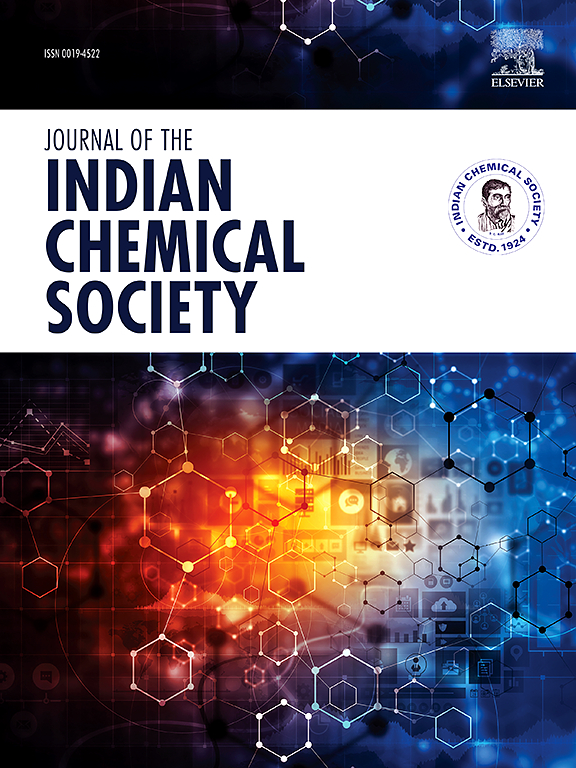Surface modified CaO nanoparticles with CMC/D-carvone for enhanced anticancer, antimicrobial and antioxidant activities
IF 3.2
4区 化学
Q2 CHEMISTRY, MULTIDISCIPLINARY
引用次数: 0
Abstract
The rising prevalence of antimicrobial resistance and the continued challenge to cancer therapy are in desperate need of developing innovative therapeutic strategies. In this regard, the present research work focuses on the development of CaO NPs and CaO-CMC-Dcar nanocomposites for enhanced antimicrobial and anti-cancer activities. CaO nanoparticles were synthesized by facile one pot chemical approach and eventually functionalized with CMC and D-carvone biomolecules. XRD analysis revealed that the crystallite size for CaO and CaO-CMC-Dcar nanoparticles was found to be 21.18 nm and 17.02 nm respectively. The band gap values obtained for CaO and CaO-CMC-Dcar nanoparticles were 4.44 eV, and 4.25 eV respectively. The CaO-CMC-Dcar nanoparticles show absorption maxima at 292 nm, slightly red-shifted from bare CaO nanoparticles. HRTEM and SEM analysis revealed that the prepared samples were roughly spherical and agglomerated in nature. Antimicrobial activity was evaluated against methicillin-resistant Staphylococcus aureus (MRSA) and Candida albicans. The zone of inhibition (ZOI) for CaO-CMC-Dcar nanoparticles against MRSA and C. albicans was 20.1 ± 0.3 mm and 21.1 ± 0.2 mm, respectively, significantly higher than that of pure CaO nanoparticles (14.1 ± 0.2 mm and 13.2 ± 0.1 mm) and comparable to standard anti-bacterial streptomycin and antifungal fluconazole discs. Anticancer activity was assessed via MTT assay against MOLT-4 blood cancer cells, where the IC50 values for CaO and CaO-CMC-Dcar nanoparticles were 22.6 μg/mL and 21.54 μg/mL, respectively. Additionally, CaO-CMC-Dcar nanoparticles exhibited enhanced antioxidant activity (80 %) compared to CaO (70 %) at 20 μg/mL, with performance comparable to that of Vitamin C. Experimental results revealed that the CaO-CMC-Dcar nanoparticles exhibited superior biological activity compared to pure CaO nanoparticles.

求助全文
约1分钟内获得全文
求助全文
来源期刊
CiteScore
3.50
自引率
7.70%
发文量
492
审稿时长
3-8 weeks
期刊介绍:
The Journal of the Indian Chemical Society publishes original, fundamental, theorical, experimental research work of highest quality in all areas of chemistry, biochemistry, medicinal chemistry, electrochemistry, agrochemistry, chemical engineering and technology, food chemistry, environmental chemistry, etc.

 求助内容:
求助内容: 应助结果提醒方式:
应助结果提醒方式:


